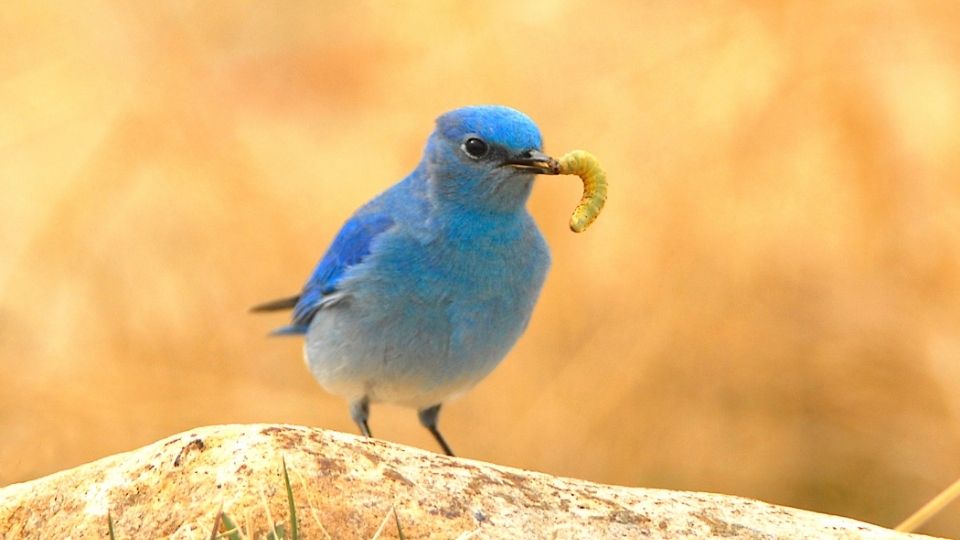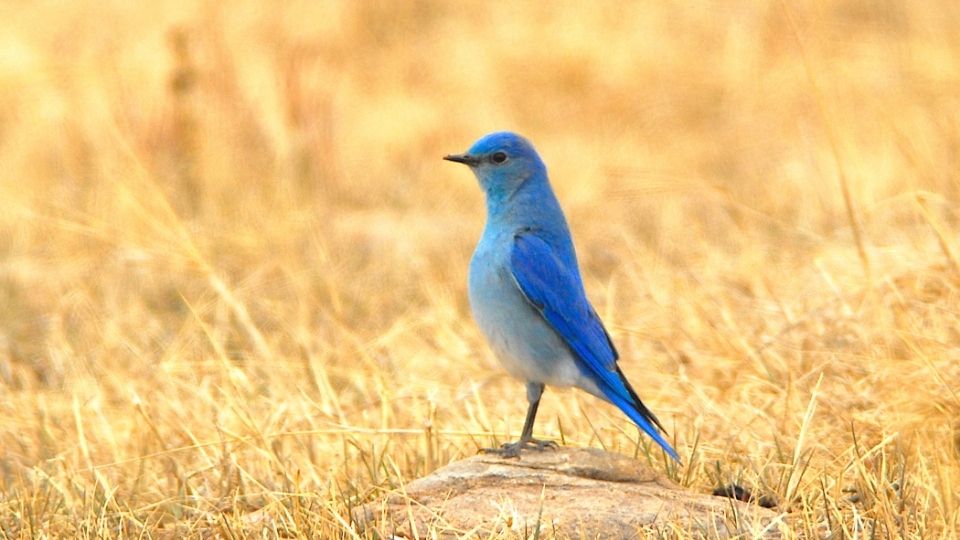Technically, bluebirds are migratory birds. These quirky little bird species' migration mainly depends on food sources; thus, Bluebirds living in northern states are more likely to migrate.
Do Bluebirds Migrate for the Winter?
Bluebirds are situational migrators. They tend to stay where they are unless inclement weather causes a food shortage. Otherwise, they rarely migrate and prefer to remain in the breeding territories year-round.
Where do Bluebirds Migrate To?
Where a bluebird migrates too is dependent on its region. There are three species of bluebirds in North America.
- The Western bluebird lives west of the Rocky Mountains. They range from Mexico to British Columbia, Canada.
- The Mountain bluebird lives in the Rocky Mountains, with a range spanning from Mexico to Alaska.
- The Eastern bluebird lives east of the Rocky Mountains, from Honduras to Canada.
Each of these bluebird species migrates to a specific region, staying within their respective range boundaries.
- Birds from eastern Canada down to Ohio will spend their winters in Texas, Louisiana, Mississippi, Alabama, and Mexico.
- Bluebirds who live in New Hampshire to southeast Michigan prefer to spend their winter in Florida, Georgia, North, and South Carolina.
- Western bluebirds fly south to California, Arizona, and Mexico.
Mountain bluebirds fly to a lower altitude if possible rather than leaving their home territory entirely. Despite this, Mountain bluebirds are still known to travel south for the winter when food is scarce.

How do Bluebirds Survive the Winter?
Being situational migrators also complicates survival in the winter.
Bluebirds are cavity nesters, but they do not make their own cavities. Since they are unfamiliar with the locations of cavities along their migratory routes, they roost in trees.
Migrating bluebirds often find themselves sharing space with stationary bluebirds. This creates overcrowding, and many bluebirds will end up sharing a single cavity or roost.
Bluebirds that remain in their home territory year-round are familiar with the location of cavities, woodpecker holes, and even nesting boxes provided by humans.
While sharing space with migrating bluebirds would seem problematic, bluebirds don’t seem to mind sharing nest sites.
An overcrowded cavity may result in competition or squabbling between birds, but it’s not uncommon to see many bluebirds sharing a small space before breeding season.
Check our videos to find out all about the way bluebirds nest and lay eggs, and how to attract bluebirds to your garden!
What Month do Bluebirds Migrate South?
Since all bluebirds do not migrate, there is no set time for a mass bluebird migration.
Bluebirds in the southern states stay in their homes year-round, while those in the most severe climates start migrating as soon as the weather is harsh and food is scarce.
The harshest climates can decrease the bluebird population in early October. Bluebirds in those climates typically return by March.
Bluebird migration depends entirely on regional weather. Bluebirds are content to ride out the winter in their home territory as long as food sources are available.
Because of this, birds in the northernmost areas of the bluebird’s range will migrate first. As they head south, the flock will grow until the migrating bluebirds settle in a warm southern home to spend the winter.
Climates that are more temperate but still northern tend to hold their bluebird populations for longer.
Since bluebirds rely on berries to get them through the winter, they can stay longer in climates where berries are ample through the fall and early winter months.
What are the Benefits of Migrating?
Migrating has a few benefits. Some of those benefits are entirely for the migrating bird, but some year-round residents also benefit from bluebird migration.
The primary motivation for migration is food scarcity — the migrating bird benefits from flying south to stay healthy and strong. Many return to their breeding territories immediately before mating season, so they must be prepared to care for nestlings.
Migration can also indirectly benefit the year-round residents. While bluebirds mate for life, they will also find another mate if their mate dies or leaves.
Bluebirds are not endangered, but survival can be challenging. Their lifespan is 6-10 years, but the highest mortality rate belongs to bluebirds in their first year of life.
A female bluebird can raise her first brood the summer after she hatches. Many birds pair up before they’ve completed their first year. If a young bluebird loses its mate, migration can help them find a new mate.
How Much Distance do Bluebirds cover During migration?
Situational migrators have a good deal of variation in their mileage. Bluebirds from the northernmost climates can cover over 1,400 miles flying from Canada to Mexico.
The distance covered by situational migrants varies with the intensity of the weather event, which means the lengths also change from year to year.
Long, harsh winters push bluebirds farther south, while short, mild winters encourage them to stay close to home.
Depending on the weather, a bluebird could travel over 1,400 miles one year and only a few hundred miles the next.
Since they are situational migrators, the distance and time spent migrating varies dramatically from year to year, as well as from region to region.
What attracts Bluebirds to a Habitat?
Like most animals, bluebirds are attracted by food, shelter, and safety.
Bluebirds are found in open woodland areas and at the edge of heavily wooded areas. They do not like wide open spaces and prefer forests filled with evergreen, deciduous trees. Conifer forests are also an ideal habitat for bluebirds, offering plenty of nest cavities for wintering grounds.
They also thrive in burned areas and areas that have been logged with dead trees left behind. In both cases, dead trees provide a suitable place for nest sites.
These areas also tend to offer an abundant food source. Insects are readily available in densely wooded areas, and the shade provided by the trees offers the perfect conditions for many berry species to grow.
Anywhere a bluebird can find insects, trees, and natural cavities is going to be an ideal place to live until they return to their breeding grounds in the Spring.

